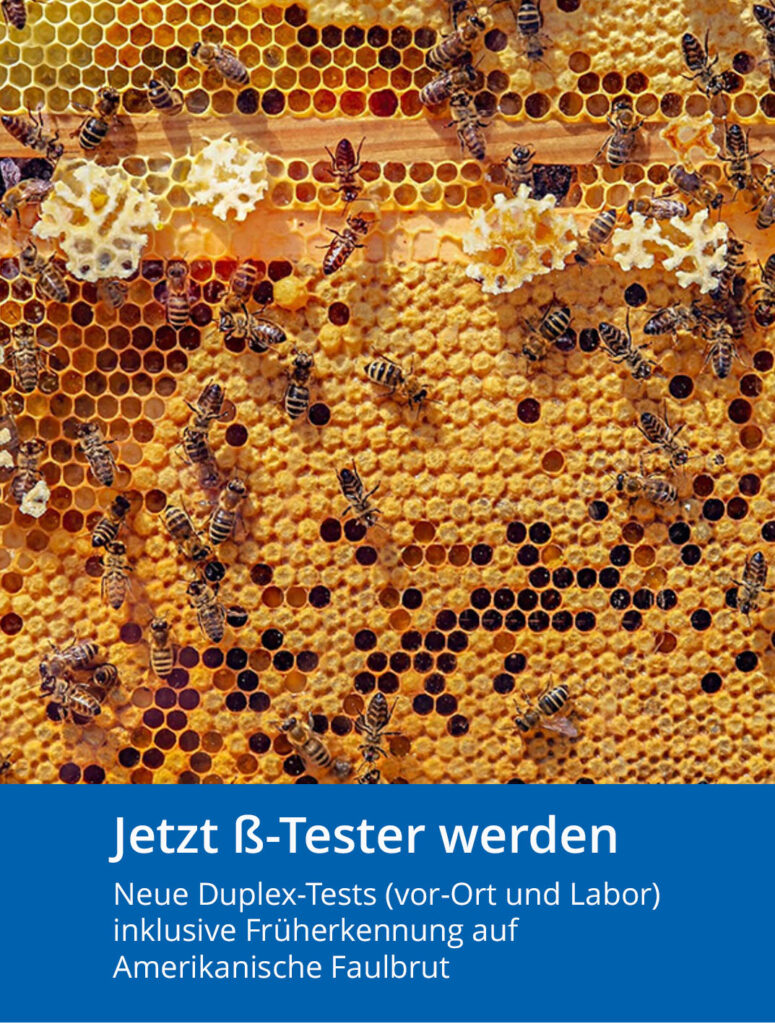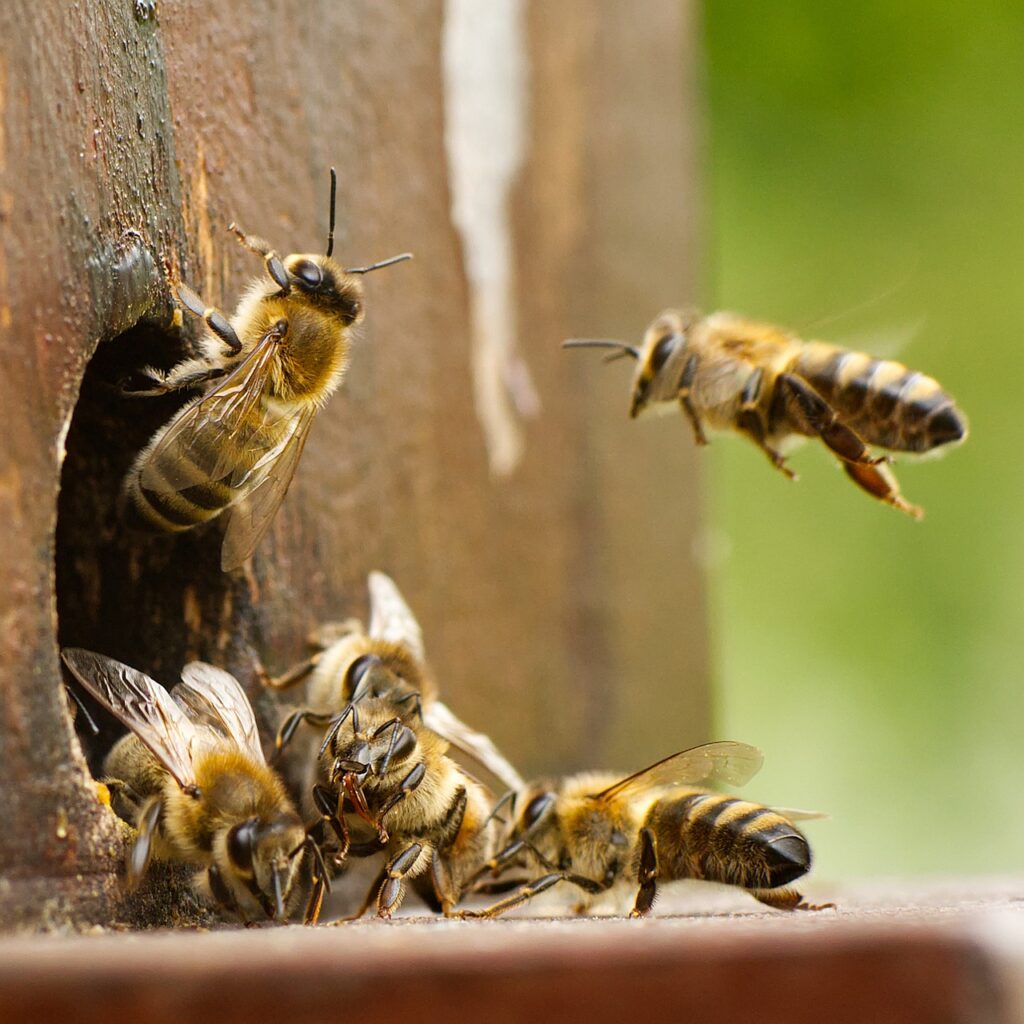The challenge of bee diseases
The health of their bees is a key issue for all beekeepers. Infection-related weakening of the bees and thus reduced performance or even the loss of entire colonies lead to economic and ecological damage.
Increase in bee diseases
The threat to our bees from diseases is increasing. This is due to various environmental factors, but the effects of climate change are a particular contributory factor. The change in climatic conditions is leading to a global spread of pathogens and parasites that are dangerous to bees. Highly infectious diseases that threaten entire colonies are particularly dramatic. The health of wild bees also depends on keeping healthy honey bee colonies.


Recognize infections and act early
In order for immediate action to be taken in the event of an infection, it is first necessary to clearly identify the type of infection. Determining this from visible symptoms, for example, is usually very difficult, often impossible. Rapid and reliable diagnostics are therefore required. As we know from the SARS-CoV-2 pandemic, for example, certain protein compounds (proteins) of a pathogen can be detected. This allows the exact type of pathogen to be identified with high sensitivity and specificity.
Detection of bee pathogens: Our research
With the aim of making a sustainable contribution to protecting bee health, we are developing diagnostic tests for important bee diseases. These are not only used in cases of infection, but also for prophylactic testing. We are working on several current topics in order to provide beekeepers, veterinarians, authorities and laboratories with fast and cost-effective detection methods.
American foulbrood (AFB): New duplex test
Bacterial infection of honey bee larvae
American foulbrood (AFB) is a highly infectious, notifiable disease of bee larvae. The pathogen that causes AFB is the bacterium Paenibacillus larvae. The highly infectious spores are transmitted by predatory bees or contaminated food and the larvae are infected with the pathogen. An infection usually leads to death.
The new AFB duplex rapid test detects a larval infection with high sensitivity. It not only detects the known ERIC I genotype (with the typical symptoms of foulbrood), but also the even more deadly ERIC II genotype.
Nosemosis: detection and differentiation
Microspiridosis in bees
Nosemosis is a diarrheal disease of adult bees. The causative agents of nosemosis are the only two microsporidia species that are pathogenic for honey bees, Nosema apis and Nosema ceranae. Depending on the species, the consequences of the infection are reduced performance and a shortened lifespan of the bees or even the loss of the colony. Even a weakening of the colony results in an increased susceptibility to further infections.
NaDiNe research project
In cooperation with the State Institute of Apiculture, we are currently working on an easy-to-use immunological test system for laboratories and testing facilities. The test result provides certainty as to whether and in what way a bee colony is infected with the nosemosis pathogen. Compared to previous diagnostic methods, the immunoassay is intended to enable faster and cheaper detection with a high sample throughput. The test format can be used in almost any laboratory due to the manageable equipment requirements for carrying out the test.
Term: 01.06.2025 – 01.11.2027
Project sponsor: Euronorm GmbH – INNO-KOM
Contact
Marie Mahnkopf
0361 – 663 9775